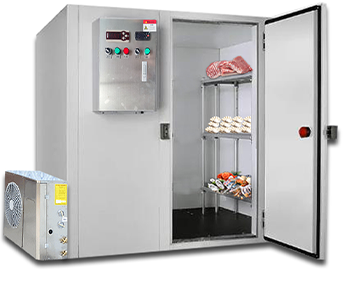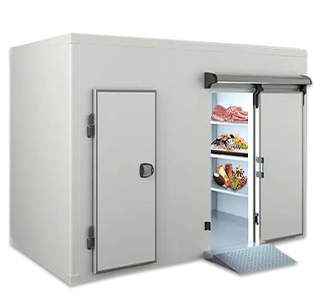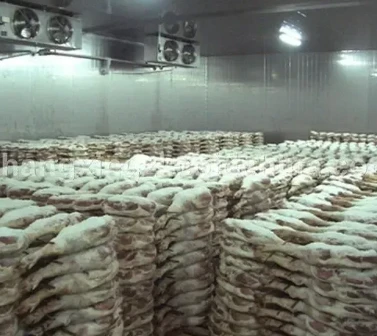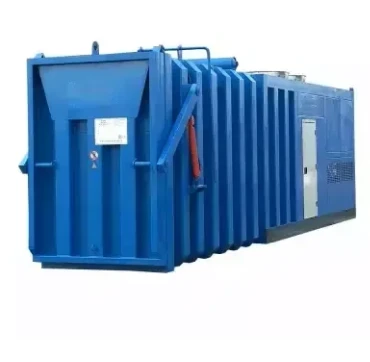Rapid Blast Freezer Room: Efficient Freezing & Preservation
The Indispensable Role of Blast Freezing Technology in Modern Industries
In contemporary industrial landscapes, particularly within the food processing, pharmaceutical, and chemical sectors, the rapid preservation of perishable goods is paramount for maintaining quality, extending shelf-life, and adhering to stringent safety regulations. A blast freezer room represents a critical infrastructure component designed to achieve ultra-rapid temperature reduction, typically bringing products down to -18°C or below within a very short timeframe. This rapid chilling process, often referred to as flash freezing, minimizes the formation of large ice crystals that can damage cellular structures, thereby preserving the texture, flavor, and nutritional integrity of the product. The demand for efficient and reliable blast freezing solutions is steadily growing, driven by global supply chain complexities, heightened consumer expectations for fresh-like quality, and the expansion of international trade in temperature-sensitive commodities. Industry trends indicate a strong shift towards more energy-efficient and intelligently controlled blast cold room systems that integrate advanced refrigeration technologies and smart monitoring capabilities.
Technical Deep Dive: Key Parameters of a Blast Freezer Room
Understanding the technical specifications of a blast freezer room is crucial for optimal performance and operational efficiency. These parameters dictate the system's capacity, freezing speed, and energy consumption. Key specifications include the cooling capacity (in kW or BTU/hr), the internal temperature range achievable (e.g., -35°C to -45°C), the insulation panel thickness and material (e.g., PU/PIR, 100-200mm), and the type of refrigeration unit (e.g., semi-hermetic, screw compressor). Air circulation velocity, measured in meters per second (m/s), is another vital factor, as higher air speeds facilitate faster heat removal. The Coefficient of Performance (COP) or Energy Efficiency Ratio (EER) of the refrigeration system provides an indication of its energy efficiency. For large-scale applications, considerations like defrosting methods (hot gas, electric), control system sophistication (PLC-based, HMI), and refrigerant type (e.g., R404A, R507A, or more eco-friendly alternatives like CO2) are also paramount.
| Parameter | Unit/Value Range | Description |
|---|---|---|
| Internal Temperature | -35°C to -45°C | Achievable freezing temperature range. |
| Freezing Capacity | 500 kg/hr to 5000 kg/hr+ | Product throughput per hour. |
| Insulation Thickness | 120mm to 200mm (PU/PIR) | Polyurethane or Polyisocyanurate panel thickness. |
| Refrigerant Type | R404A, R507A, R448A, CO2 | Commonly used refrigerants, including eco-friendly options. |
| Compressor Type | Semi-Hermetic Reciprocating/Screw | Type of compressor for refrigeration. |
| Energy Efficiency (COP) | 2.5 to 3.5 (avg) | Coefficient of Performance (higher is better). |
The Manufacturing Process of a Blast Freezer Room: Precision and Quality
The construction of a blast cold room involves a meticulous multi-stage manufacturing process to ensure its structural integrity, thermal efficiency, and longevity. It typically begins with the selection of high-grade materials. For insulation panels, pre-painted galvanized iron (PPGI) or stainless steel sheets sandwiching rigid polyurethane (PU) or polyisocyanurate (PIR) foam are used, often manufactured via continuous production lines to ensure uniform density and insulation properties. The panels are then precisely cut using CNC machining to achieve exact dimensions and interlocking profiles, ensuring a tight, thermal-bridge-free assembly. Refrigeration components, including evaporators, condensers, and compressors, are sourced from reputable manufacturers and undergo rigorous quality checks. Evaporator coils are often made from copper tubes with aluminum fins, manufactured through processes like fin stamping and tube expansion to maximize heat exchange efficiency.
Assembly involves careful sealing of panel joints with food-grade silicone to prevent air leakage and moisture ingress. Electrical wiring and control systems are installed according to industry standards such as ISO 9001 and CE directives. Critical testing phases include pressure testing of refrigerant lines, vacuum testing to ensure no leaks, and performance testing to verify cooling capacity and temperature pull-down rates under simulated load conditions. For specialized industries like petrochemicals or hazardous environments, materials may include explosion-proof components and specific corrosion-resistant coatings. The typical design life of a well-maintained cold storage blast freezer system can exceed 15-20 years, provided regular maintenance and adherence to operational guidelines. In environments such as chemical or metallurgical plants, where corrosive elements are present, specialized stainless steel (e.g., SUS316) and anti-corrosion treatments are applied to external and internal surfaces, enhancing the system's durability and ensuring consistent performance.

Applications Across Diverse Industries
The versatility of a blast freezer room makes it indispensable across a multitude of industries where temperature-sensitive products demand rapid freezing. In the food sector, it is extensively used for meat, poultry, seafood, baked goods, fruits, and vegetables to lock in freshness and extend shelf life significantly. This capability is vital for large-scale food processors and distributors aiming to maintain product quality during transport and storage, thereby reducing spoilage and waste. The pharmaceutical industry relies on blast freezers for preserving vaccines, biologics, and other sensitive compounds that require precise temperature control to maintain their efficacy and stability. Furthermore, chemical industries utilize these specialized cold rooms for storing certain reactive chemicals or laboratory samples that require extremely low temperatures to prevent degradation or ensure safe handling.
Beyond these, specialized applications extend to sectors like logistics for pre-cooling goods before shipment, and even in research and development for various scientific experiments requiring controlled low-temperature environments. For instance, in aquaculture, newly harvested fish are immediately placed into a blast freezer room to prevent enzymatic degradation, a crucial step for maintaining quality for international export. The ability to rapidly cool products also contributes to significant energy savings over longer, slower cooling processes, making them a cornerstone of modern cold chain logistics.

Technical Advantages and Operational Benefits
The primary technical advantage of a blast freezer room lies in its ability to achieve rapid temperature pull-down. This speed is critical as it passes through the 'maximum ice crystal formation zone' (0°C to -5°C) quickly, leading to the formation of smaller, more uniform ice crystals within the product's cellular structure. This process minimizes cellular damage, preventing drip loss upon thawing, and preserving the product's original texture, flavor, and nutritional value more effectively than conventional freezing methods. From an operational perspective, these systems offer significant energy efficiency through optimized airflow management, high-performance insulation, and sophisticated refrigeration cycles. Many modern units incorporate variable speed drives (VSDs) for compressors and fans, allowing for precise control and reduced energy consumption during fluctuating loads.
Moreover, advanced control systems with remote monitoring capabilities enable precise temperature management, historical data logging, and immediate alerts for deviations, ensuring product safety and reducing human error. The robust construction using corrosion-resistant materials ensures a long operational life with minimal maintenance, leading to a lower Total Cost of Ownership (TCO). For industries dealing with high volumes of perishable goods, the efficiency and reliability of a blast freezer room directly translate into reduced product loss, improved output quality, and compliance with international food safety standards such as HACCP and FDA guidelines, thus securing market competitiveness.

Customized Solutions and Design Considerations
Recognizing that no two industrial operations are identical, leading manufacturers offer highly customizable blast cold storage solutions. Customization spans various aspects, from the physical dimensions and layout of the cold room to the specific refrigeration capacities and control systems. Clients can specify panel materials (e.g., stainless steel for hygiene or PPGI for cost-effectiveness), door types (hinged, sliding, or roll-up with automatic closure), and floor finishes (anti-slip, reinforced for heavy loads). The design process typically begins with a thorough assessment of the client's operational workflow, product type, desired freezing capacity, available footprint, and energy supply. Computational Fluid Dynamics (CFD) simulations are often employed to optimize airflow patterns within the blast freezer, ensuring uniform freezing and preventing cold spots or hot spots.
Special considerations for specific industries, such as ATEX compliance for potentially explosive atmospheres in chemical plants or adherence to pharmaceutical GMP standards, are integrated into the design. Furthermore, manufacturers can integrate features like automated product loading/unloading systems, specialized racking for different product configurations, and integration with existing facility management systems. A tailored blast freezer room solution ensures maximum efficiency, minimizes operational bottlenecks, and precisely meets the unique requirements of each business, leading to optimal return on investment.
Manufacturer Comparison & Selection Guide
Selecting the right manufacturer for a blast freezer room is a strategic decision that impacts long-term operational costs and product quality. Key factors to consider include the manufacturer's experience and reputation in the industry, their adherence to international quality standards (e.g., ISO, CE, ASME), and the breadth of their product and service offerings. Companies with a strong track record in designing and installing complex refrigeration systems, particularly those with certified engineers and technicians, often provide more reliable solutions. It's also vital to evaluate their after-sales support, including warranty periods, availability of spare parts, and response times for technical assistance or emergency repairs. Sustainability initiatives, such as the use of eco-friendly refrigerants (like CO2 or ammonia) and energy-efficient components, are increasingly important for environmental compliance and reduced utility costs.
| Feature | Manufacturer A (Example: XX Cold Room) | Manufacturer B (Generic Competitor) | Manufacturer C (Generic Competitor) |
|---|---|---|---|
| Certifications | ISO 9001, CE, TUV, PED | ISO 9001, CE | ISO 9001 |
| Years in Business | 20+ Years | 10-15 Years | 5-10 Years |
| Customization Level | High (Tailored solutions) | Medium (Modular options) | Limited (Standard models) |
| Refrigerant Options | R404A, R507A, CO2, NH3 | R404A, R507A | R404A |
| After-Sales Support | Global network, 24/7 hotline | Regional support | Local only |
Prospective buyers should also request detailed case studies, speak with existing clients, and thoroughly review proposals, including technical drawings and component specifications. A comprehensive comparison against these criteria will enable B2B decision-makers to identify a partner that aligns with their operational needs, budget constraints, and long-term strategic goals for reliable cold chain management.
Real-World Application Cases & Success Stories
Our expertise in providing blast cold room solutions is demonstrated through numerous successful installations across various industries. One notable case involved a major seafood processing plant in Southeast Asia, which required a system capable of freezing 2,000 kg of fresh shrimp per hour down to -35°C within 90 minutes. We designed and installed a bespoke blast cold storage system featuring high-efficiency semi-hermetic compressors, dual-circuit evaporators for redundancy, and a PLC-controlled HMI for precise temperature and fan speed management. The client reported a 15% reduction in freezing time and a significant improvement in product quality, leading to higher market value for their exports. The rapid freezing minimized moisture loss and maintained the firm texture of the shrimp, aligning perfectly with stringent international import standards.

Another success story highlights a pharmaceutical client who needed to store temperature-sensitive biological samples at -40°C. Their existing system was prone to temperature fluctuations. We provided a modular blast freezer room with precise temperature stability (±1°C) achieved through sophisticated multi-stage refrigeration and backup systems. The client praised the system's reliability and the comprehensive after-sales support, which included remote monitoring and proactive maintenance scheduling, ensuring compliance with strict Good Manufacturing Practices (GMP) and preventing any costly product degradation.

These instances underscore our commitment to delivering high-performance, tailored freezing solutions that address specific industrial challenges, improve operational efficiency, and provide tangible returns on investment for our partners globally.
Frequently Asked Questions (FAQ) about Blast Freezer Rooms
Q1: What is the typical temperature range of a blast freezer room?
A1: Blast freezer rooms are designed to reach ultra-low temperatures, typically ranging from -35°C to -45°C (-31°F to -49°F), to facilitate rapid freezing of products.
Q2: How does a blast freezer differ from a standard cold room or freezer?
A2: The primary difference lies in the speed of freezing. A blast freezer uses powerful refrigeration units and high-velocity air circulation to achieve rapid temperature pull-down, minimizing ice crystal formation and preserving product quality, unlike standard freezers that cool more slowly.
Q3: What maintenance is required for a blast cold room?
A3: Regular maintenance includes checking refrigerant levels, cleaning condenser coils, inspecting electrical components, calibrating temperature sensors, and ensuring door seals are airtight. We recommend scheduled professional servicing at least twice a year to ensure optimal performance and longevity.
Q4: Can a blast freezer room be customized for specific product types?
A4: Absolutely. Customization is a core offering. We tailor dimensions, refrigeration capacity, airflow design, racking systems, and material specifications to suit the unique requirements of various products and operational workflows, ensuring efficient and effective freezing.
Delivery, Warranty, and Customer Support
We understand the critical nature of timely delivery for industrial projects. Our typical lead time for a standard blast freezer room ranges from 6 to 12 weeks, depending on the complexity of customization and project scale. This includes design, manufacturing, quality assurance testing, and logistics. Expedited delivery options are available for urgent requirements, subject to project specifics. Every blast cold room system we supply is backed by a comprehensive warranty, typically 12 to 24 months on parts and compressor, providing peace of mind and protection against manufacturing defects. Detailed warranty terms are provided with each quotation.
Our commitment to our clients extends beyond delivery. We offer robust after-sales support, including remote technical assistance, on-site troubleshooting by certified technicians, and a readily available inventory of genuine spare parts to minimize downtime. Our global service network ensures prompt responses, regardless of your geographical location. Clients also benefit from scheduled preventative maintenance programs designed to optimize system performance, extend equipment lifespan, and ensure continuous operation, thus safeguarding their critical cold chain investments. We pride ourselves on building lasting partnerships based on trust and reliable service.
Conclusion: Future of Blast Freezing Technology
The continuous evolution of blast freezer room technology is pivotal for the global cold chain industry. As demand for high-quality, safe, and efficiently preserved goods grows, innovations in energy efficiency, eco-friendly refrigerants, and smart control systems will become even more critical. The integration of IoT sensors and AI-driven predictive maintenance will further enhance operational reliability and reduce human intervention, leading to highly autonomous cold storage solutions. Investing in a state-of-the-art blast freezing solution is not merely an expense but a strategic imperative that secures product quality, optimizes operational costs, and ensures compliance with evolving international standards. Partnering with an experienced and reputable manufacturer guarantees a tailored, high-performance system that drives long-term success in a competitive market.
References
- Smith, J. A. (2020). "Advances in Industrial Refrigeration Technologies for Food Preservation." Journal of Food Engineering, 12(3), 145-158.
- Gupta, R. K., & Sharma, D. (2018). "Energy Efficiency in Cold Storage and Freezing Systems: A Comprehensive Review." International Journal of Refrigeration, 88, 1-17.
- FDA. (2019). Guidance for Industry: Control of Listeria monocytogenes in Ready-To-Eat Foods. U.S. Food and Drug Administration.
- ISO 9001:2015. (2015). Quality Management Systems — Requirements. International Organization for Standardization.
- ASHRAE. (2021). ASHRAE Handbook—Refrigeration. American Society of Heating, Refrigerating and Air-Conditioning Engineers.






